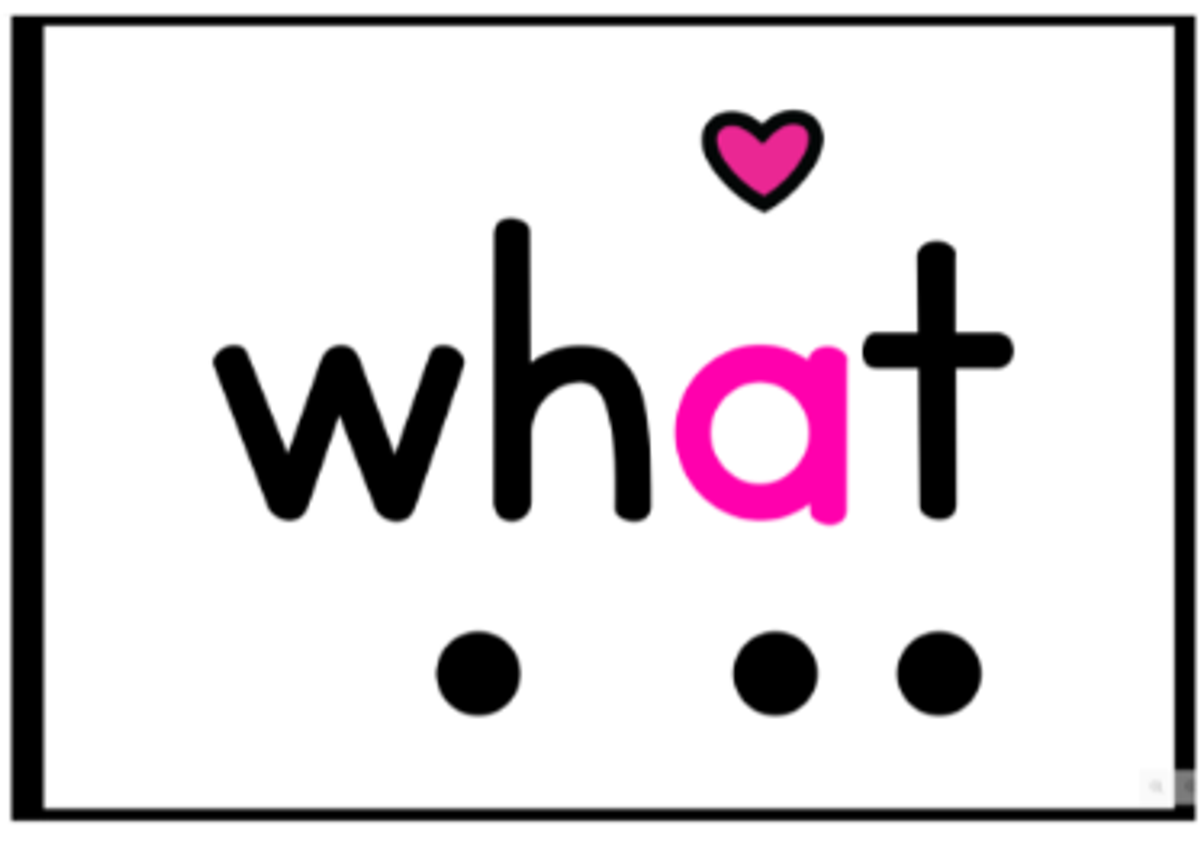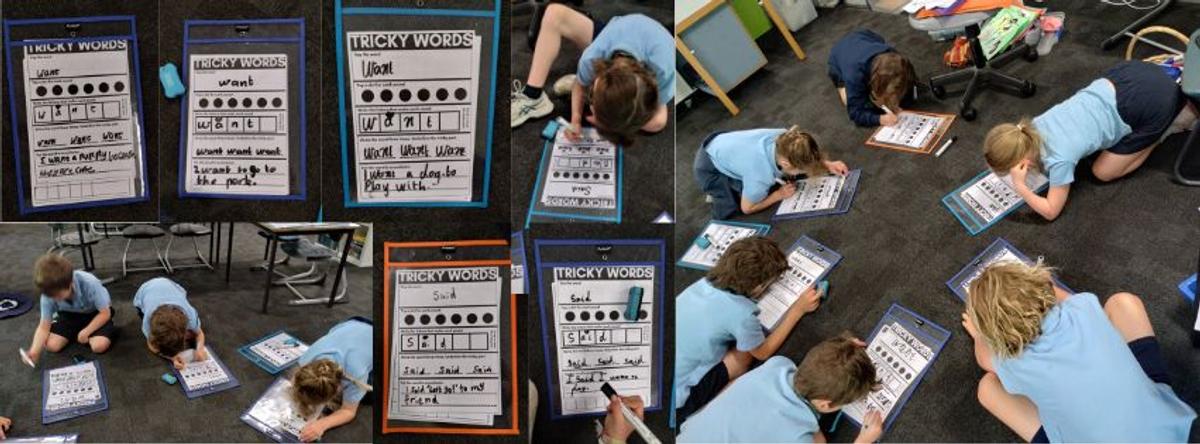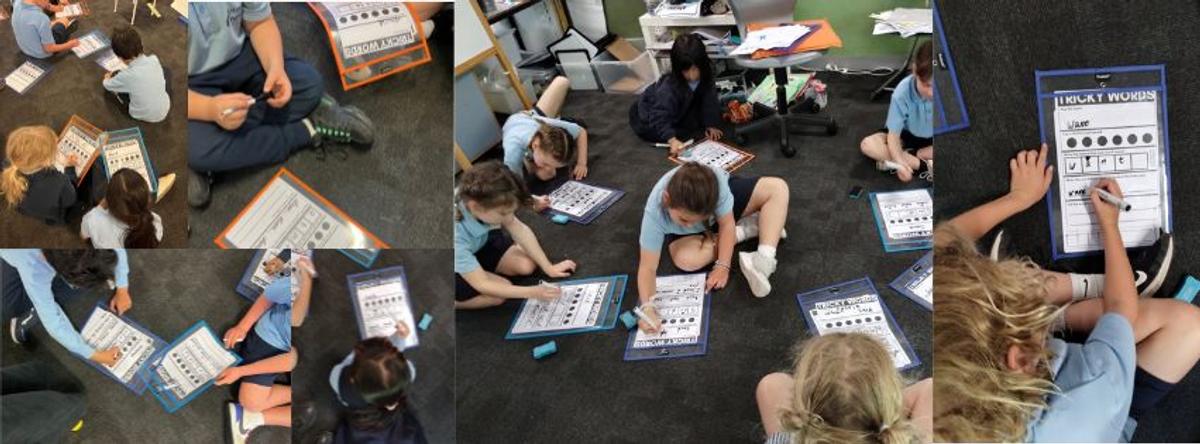Year 2
Spelling

Year 2
Spelling
To decode tricky/heart words, which contain one or more irregular letter sequences and sounds.
Tricky words are words that contain one or more irregular or unusual letter sequences, and make a different sound. e.g. ‘people’, the /ee/sound is made by the letters ‘eo’.
They may also contain sounds that are made up of letter combinations that children have not yet learned. The term refers to how decodable the word is.
We use the term ‘heart words’ interchangeably with ‘tricky words’. They are tricky words that we need to learn by heart. For example, the word ‘what’ has regular, initial, and final sounds, but the medial (middle) /a/ makes an irregular sound.
High-frequency words are different again. Often, students can decode them once they have the necessary phonics skills. For example, the word “with” is a high-frequency word.


Whole
To begin with, we came together to break down the meaning of our Learning Intention. We asked the students to consider what might make a word tricky, and if they could give an example. We discussed the way that a word needs to be broken down, to find the tricky part that needs to be learnt by heart.
Fluency
We read a series of tricky words on flashcards.
Introduction of the Word
We started with direct instruction. The word ‘what’ was introduced, as an example of a heart word. Students repeated the word, and then we focused on the sounds, which were identified and counted. We represented the sounds by tapping them out on the dots on the Tricky Words page, as shown below. Students repeated the word 'what' and then tapped out the 3 sounds in the word.
Building the Word
In this step, we started building the word, identifying the regular sounds in the word. In our example, we identified and wrote down the letters w, h and t, in the Phoneme Frame boxes.
Mark the Heart Part
We discussed the part of the word that is irregular, they wrote down the letter(s) that make the regular sounds and drew a little heart symbol above the irregular section. The goal was simply to bring attention to the piece of the word that students will have to know by heart.
Small
Students practised writing their focus word on the three lines and marked the “heart part.” They then used their heart word in a sentence. Reminders were given to keep marking the heart part to help focus their attention on the piece they’ll need to memorise.
Whole
We came together again, to share our sentences.




To continue the learning at home, from this experience:
Most of all, have fun discovering new words together!
Jocelyn and Steph
Year 2 Team